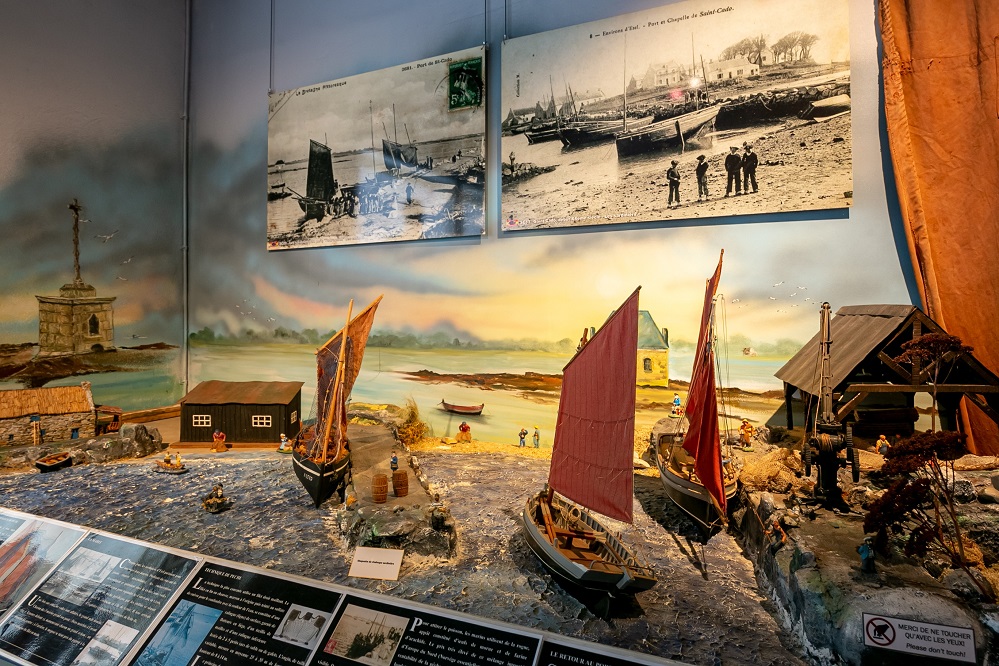
In 1728, the port of Saint-Cado had 22 boats, which was the beginning of sardine fishing. At the end of the 19th century, the sardine fleet spread throughout the ria from the Magouër, Vieux-Passage, Étel with more than a hundred boats.
The boats, 10-12 meters long and 3 meters wide, are rarely decked. They have a main mast for the mainsail and a foremast. The uniformly black hulls contrast with the red ochre color of the rigging.
The crew consisted of 6 to 7 men: the skipper, 3 or 4 sailors, a 16-17 year old novice and a 13-15 year old apprentice. Their rudimentary equipment was limited to a waxed canvas, gaiters and wooden clogs.
Sardine fishing is a seasonal activity that starts in May and ends at the end of September. The fishing grounds are located near Gâvres or in Quiberon Bay. When fishing, the blue gillnet is thrown behind the dinghy where the skipper and two sailors are seated. The latter hold the oars. Each boat has a set of nets of different mesh sizes in order to adapt to the size of the sardines. The nets are 20 to 35 meters long and 9 to 10 meters deep. The nets require regular maintenance: they must be re-dyed every week. The nets require regular maintenance: they must be re-tensioned every week. Professional furriers work on demand.
When the net is put in the sea, the boss baits the fish with roe. This mixture of cod roe, peanut flour and sometimes mackerel roe comes from Holland. On board the boat, the "brigadier", at the front of the boat, is ready to haul in the fish, while the other men untie the fish at each "haul". The sardines are counted by the hundreds. They are stored in baskets that can accommodate 200 units. Back at the port, it is the responsibility of the brigadier to go to the canneries. In order to remember the quantity landed, it is not uncommon for the sailor to put a small pebble in his pocket for each trip made between the boat and the factory!
After the sale, the fishermen met in a café for a "cotriade". After the meal, the boss gave each one his salary: the payment was done by the share.
At the end of the 19th century, the appearance of the seine and the encircling net modified the practice of fishing, but soon it had to face several crises: overexploitation of the fishing areas, shortage of the resource, collapse of certain markets due to foreign competition and falling prices pushed the sailors to progressively turn to a more remunerative fishery: tuna!